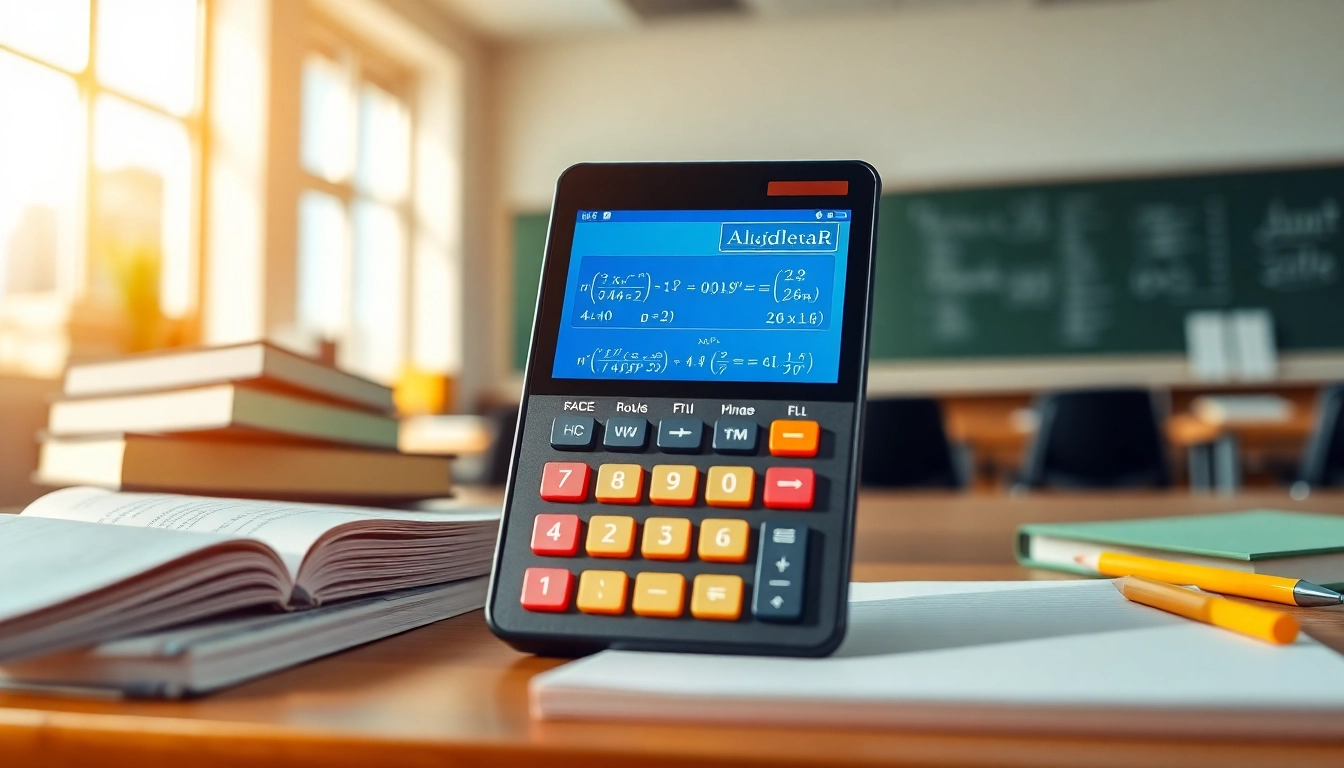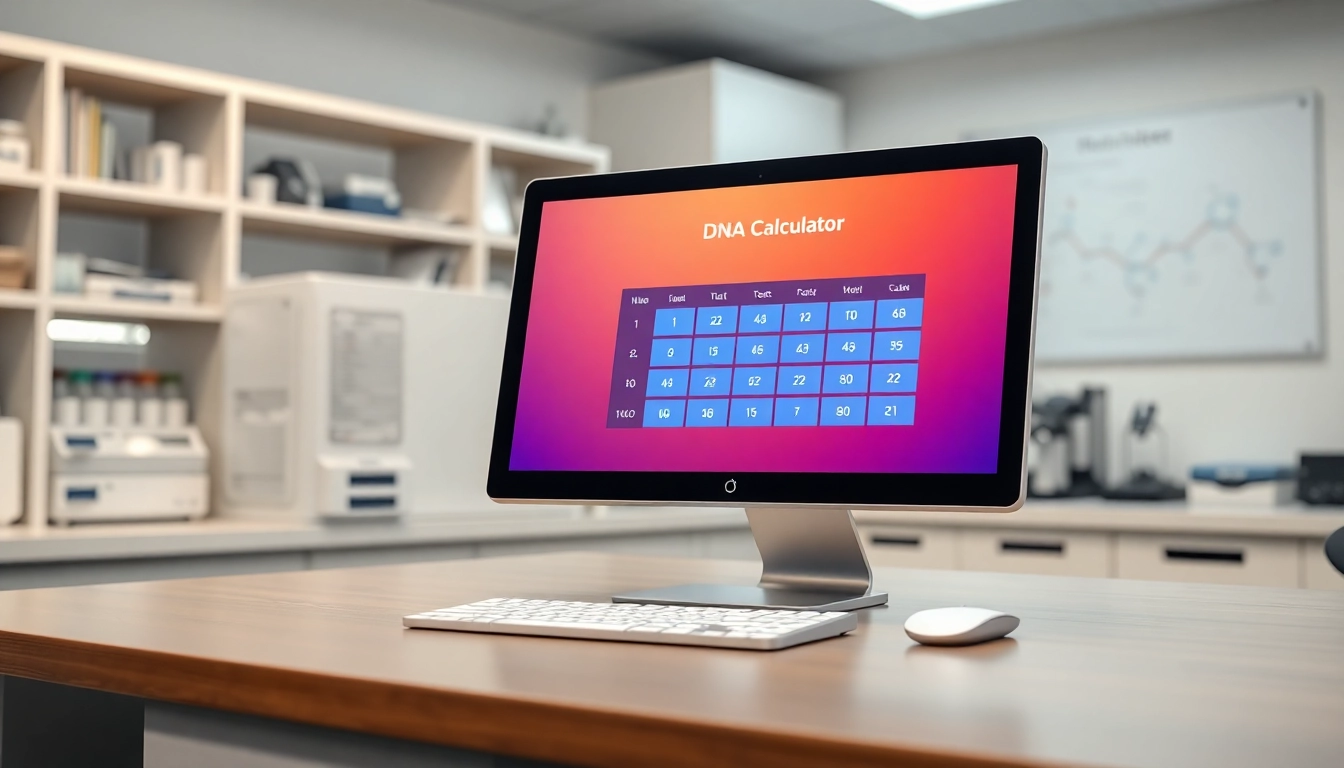Master Your Mathematics Skills with an Algebra Calculator for Step-by-Step Solutions
Understanding the Algebra Calculator
What is an Algebra Calculator?
An Algebra Calculator is a powerful tool designed to assist students, educators, and math enthusiasts in solving complex algebraic problems with ease. This online calculator enables users to input various algebraic expressions, equations, and inequalities, providing a detailed breakdown of the solution process. Unlike traditional calculators that simply perform calculations, an Algebra Calculator showcases step-by-step explanations, making it a valuable educational resource.
By using an Algebra Calculator, you can enter equations like 3x + 2 = 14 and receive not only the answer but also the method used to reach that solution. This educational aspect allows users to learn and understand algebra as they solve problems, fostering a deeper comprehension of the subject matter.
Key Features of an Algebra Calculator
Modern Algebra Calculators come equipped with several essential features, making them user-friendly and effective. Here are some of the most notable features:
- Step-by-Step Solutions: One of the standout features is the ability to provide detailed, step-by-step solutions for algebraic problems. This assists users in understanding the logic behind each operation.
- Multiple Functionality: Many calculators can solve various types of algebraic problems, including quadratic equations, polynomial factoring, graphing, and more.
- Graphing Capabilities: Some advanced Algebra Calculators have built-in graphing functions that allow users to visually represent equations and inequalities.
- User-Friendly Interface: Designed for ease of use, these calculators typically have simple interfaces that cater to users of all skill levels.
- Mobile Compatibility: Many Algebra Calculators are accessible via mobile apps or responsive websites, allowing users to solve problems on the go.
How to Use an Algebra Calculator Effectively
Using an Algebra Calculator effectively requires understanding its functionalities. Here’s a step-by-step guide:
- Choose the Right Calculator: Start by selecting a reliable and feature-rich Algebra Calculator. Ensure it aligns with your specific algebraic needs.
- Input the Equation: Carefully enter the algebraic equation you wish to solve. Make sure to format it correctly to avoid errors.
- Review the Steps: Once the calculation is complete, review the step-by-step breakdown provided. This will help solidify your understanding of the solution process.
- Practice Similar Problems: After solving one problem, practice with similar equations to enhance your skills and confidence.
Benefits of Using an Algebra Calculator
Improving Problem-Solving Skills
One of the primary benefits of using an Algebra Calculator is the enhancement of problem-solving skills. By providing clear methodologies for solving equations, users can develop their critical thinking abilities. Each time an equation is solved, it reinforces the principles of algebra, enabling users to approach different problems with confidence and systematic reasoning.
Time Efficiency in Homework
Students often face time constraints when tackling homework. An Algebra Calculator serves as an efficient tool that allows for quicker problem resolution, freeing up time for other subjects or activities. By inputting problems directly into the calculator, learners can focus more on understanding concepts rather than getting stuck on calculations. This time-saving advantage becomes increasingly valuable during busy academic schedules.
Visual Learning Through Step-by-Step Solutions
Visual learners benefit significantly from the step-by-step solutions that Algebra Calculators provide. Seeing the problem-solving process unfold in a structured manner helps these students grasp complex concepts more intuitively. The graphical representations that some calculators offer can also enhance understanding, particularly for equations that require graphical solutions.
Common Use Cases for Algebra Calculator
Solving Quadratic Equations
Quadratic equations, often represented in the form of ax² + bx + c = 0, are one of the most common problems solved using an Algebra Calculator. Students can input their specific equations to find roots through methods like factoring, completing the square, or using the quadratic formula. This versatility makes Algebra Calculators an essential tool for those studying algebra.
Factoring Polynomials
Factoring polynomials is another frequent use case. With the algebra calculator, users can enter polynomial expressions and receive step-by-step solutions to factor them correctly. This capability not only aids in solving equations but also enhances understanding of polynomial functions and their properties.
Graphing Equations
Graphing equations allows users to visualize relationships between variables. Many Algebra Calculators enable users to input equations and view their graphs instantly. This visual representation helps in understanding the behavior of different equations, such as identifying intercepts and asymptotes, providing valuable insights into algebraic functions.
Challenges and Limitations of Algebra Calculator
Understanding Calculator Errors
While Algebra Calculators are designed to assist users, errors can still occur. Mistakes in inputting equations or misunderstandings of algebraic concepts can lead to incorrect results. It’s vital for users to learn how to interpret the results critically and to double-check their work against the calculator’s output. Understanding the source of errors helps improve overall mathematical skills.
Over-Reliance on Tools
One potential downside to the widespread use of Algebra Calculators is the risk of over-reliance on these tools. Students might begin to depend on calculators for every problem, which can hinder the development of fundamental algebraic skills. It is essential to strike a balance between using calculators and practicing traditional problem-solving techniques.
When to Use Traditional Methods
Although an Algebra Calculator provides significant advantages, there are instances when traditional methods should be employed. Students should continue to practice manual solving for foundational understanding, especially in the classroom or during exams. Familiarity with traditional techniques ensures that students can adapt to different problem-solving scenarios without needing technological assistance.
Enhancing Your Learning with an Algebra Calculator
Integrating Algebra Calculator into Study Routines
To maximize the benefits of an Algebra Calculator, effective integration into study routines is crucial. Here are some strategies to consider:
- Regular Practice: Incorporate calculator usage into daily practice sessions to reinforce learning and enhance problem-solving speed.
- Pair with Traditional Study: Use the calculator alongside traditional problem-solving methods to deepen conceptual understanding.
- Group Studies: Encourage collaborative learning sessions where students can share strategies and solutions using the calculator.
Supplemental Resources for Further Practice
In addition to an Algebra Calculator, students should explore supplemental resources such as online tutorials, algebra textbooks, and math forums to deepen their knowledge. Many online platforms offer exercises and quizzes that help reinforce concepts learned through calculator use. Engaging with a variety of resources accelerates learning and helps solidify understanding.
Tracking Progress and Performance Metrics
Finally, tracking progress and performance metrics is essential for assessing learning outcomes. Many online Algebra Calculators provide insights such as time taken to solve problems or accuracy rates on various exercises. Students can utilize this data to identify areas that require additional focus or practice, ensuring a comprehensive mastery of algebra topics over time.














Post Comment